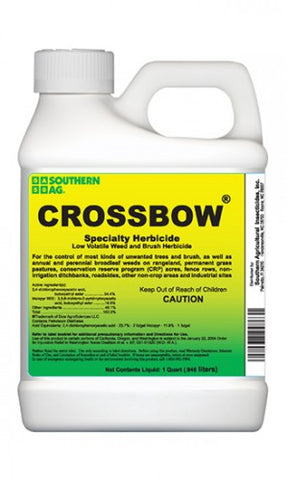

Winter annuals germinate in the fall, over-winter as a rosette or small clumps of leaves, and complete their reproductive cycle in the spring or early summer. Annual weeds are classified as winter or summer annuals.

Annuals may produce as little as 100 seeds per plant or as much as 500,000 seeds per plant, depending on species and growing conditions. Annuals complete their life cycle within one year and reproduce only by seed. Weeds are grouped into three categories-annuals, biennials, and perennials-based on their life cycles. To plan an effective weed management program, a landowner must be able to identify weeds present and understand how weed biology and ecology affect where weeds are found and how these ultimately impact management. In addition, certain plants, such as Canada thistle, bull thistle, musk thistle, Johnsongrass, and multiflora rose, which may be common weeds in CREP areas, are on the noxious weed list and must be controlled per state law. Certain weeds can produce substances (allelochemicals) that inhibit the growth of crop plants. Weeds can replace desirable plants, filling in gaps or voids and reducing biomass, stand longevity, and overall quality of desirable vegetative covers. They reduce the competitiveness of desirable plants by robbing water, light, space, and soil nutrients. Weeds in CREP areas are troublesome in many ways. Refer to the section below titled "Herbicides for Use in CREP Grassland Areas" and Table 2 at the end of this publication for more information on herbicides and their effectiveness on selected weed species.Refer to the herbicide labels for additional details. Most herbicides labeled for use on CREP grasslands may cause injury or kill many kinds of broadleaf plants.Weeds tolerant of the herbicide may invade the space left by susceptible species, ultimately creating a more severe weed problem.In CREP areas, spot spraying with a backpack or hand-held sprayer is usually the best and most economical method for scattered weed infestations.A single herbicide application will not eradicate a perennial weed problem therefore, long-term, routine maintenance tactics are required for management.Perennials are most susceptible to control with systemic herbicides in the bud to bloom stage or in late summer/early fall spring herbicide applications usually provide ineffective control.Spray biennial weeds in the rosette stage before they overwinter or prior to bolting in the spring.In CREP areas, herbicides are an effective alternative to mowing to control unwanted vegetation.If you see a new weed, dig it, pull it, or remove the seed head prior to seed dispersal.Approved mowing may occur from August 1 to August 31, but no more than one-third of the area may be mowed in most CREP contracts.Spot mowing for weed control from April 1 to July 31 must be approved in advance by the Farm Service Agency.After the establishment period, mowing is not allowed from April 1 to July 31.Mowing may be used as necessary during the establishment period (first one to three years).Annual mowing of the entire CREP area is not allowed after the stand is established.Mechanical Management-Mowing and Hand Removal Avoid planting species for the purpose of ornamentals, erosion control, or forage that could become invasive pests over large areas (e.g., purple loosestrife, giant hogweed, tree of heaven, Japanese knotweed, bush honeysuckles, privets, butterfly bush).Prevent dispersal of seeds or vegetative structures into uninfested areas and manage to prevent seed production in infested areas.In established vegetative cover systems, prevention is the most important tool for managing weeds.Consider planting date, fertilization, planting population, and high-quality crop seed and choose adapted species and varieties.

CROSSBOW HERBICIDE KILL GRASS FREE


 0 kommentar(er)
0 kommentar(er)
